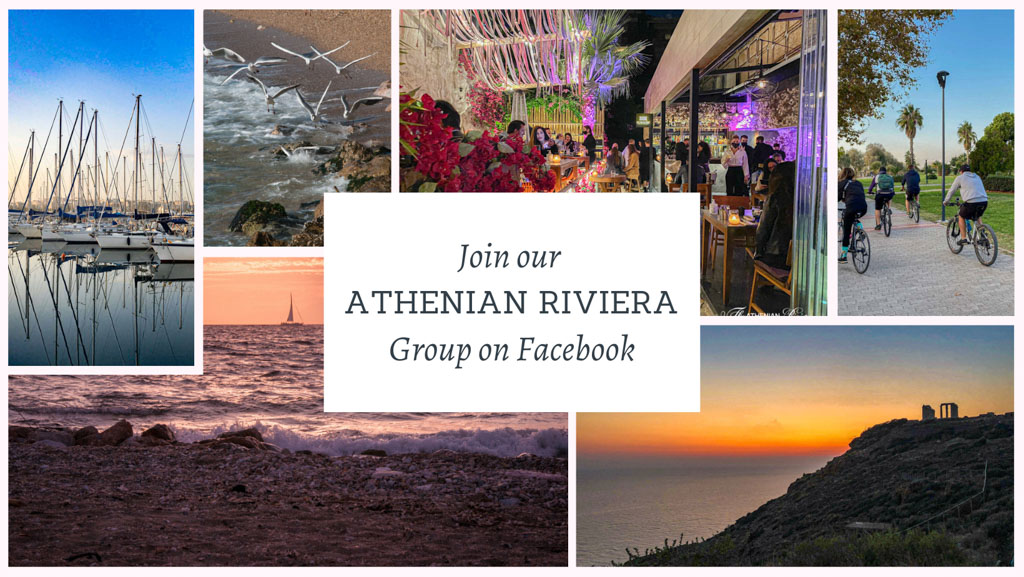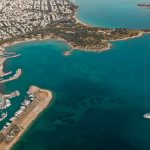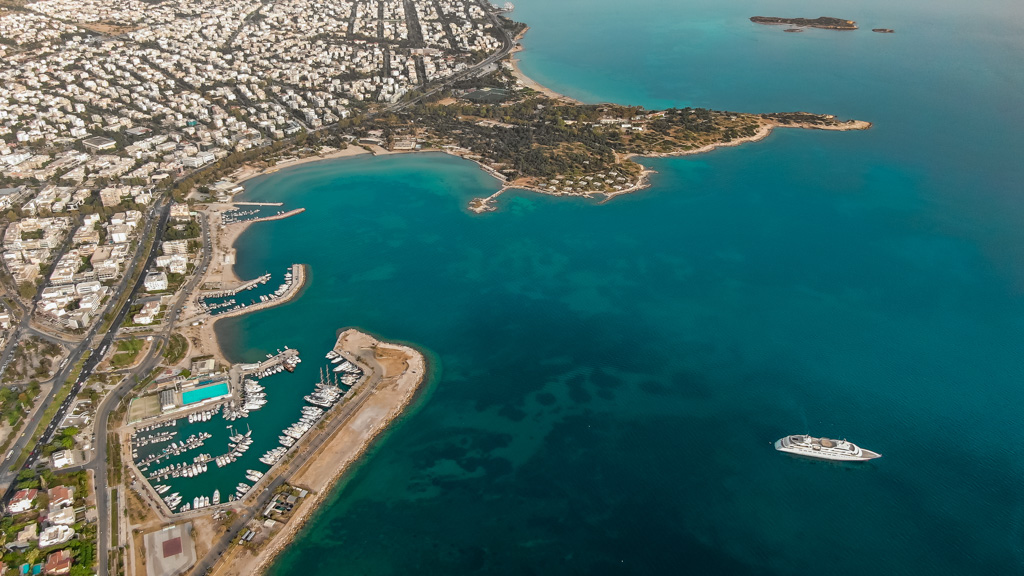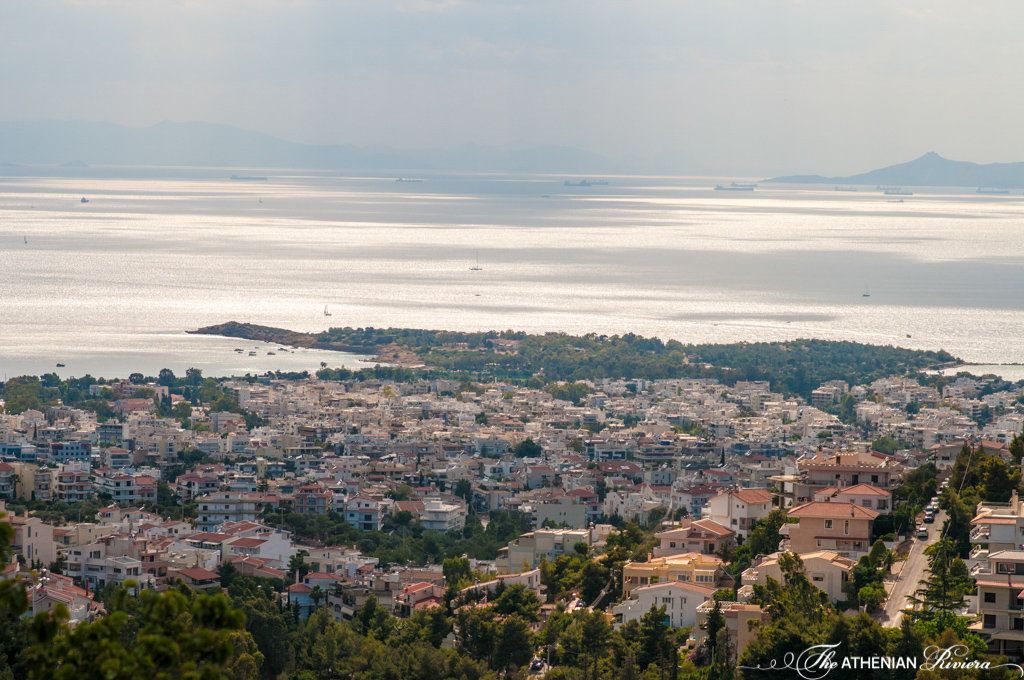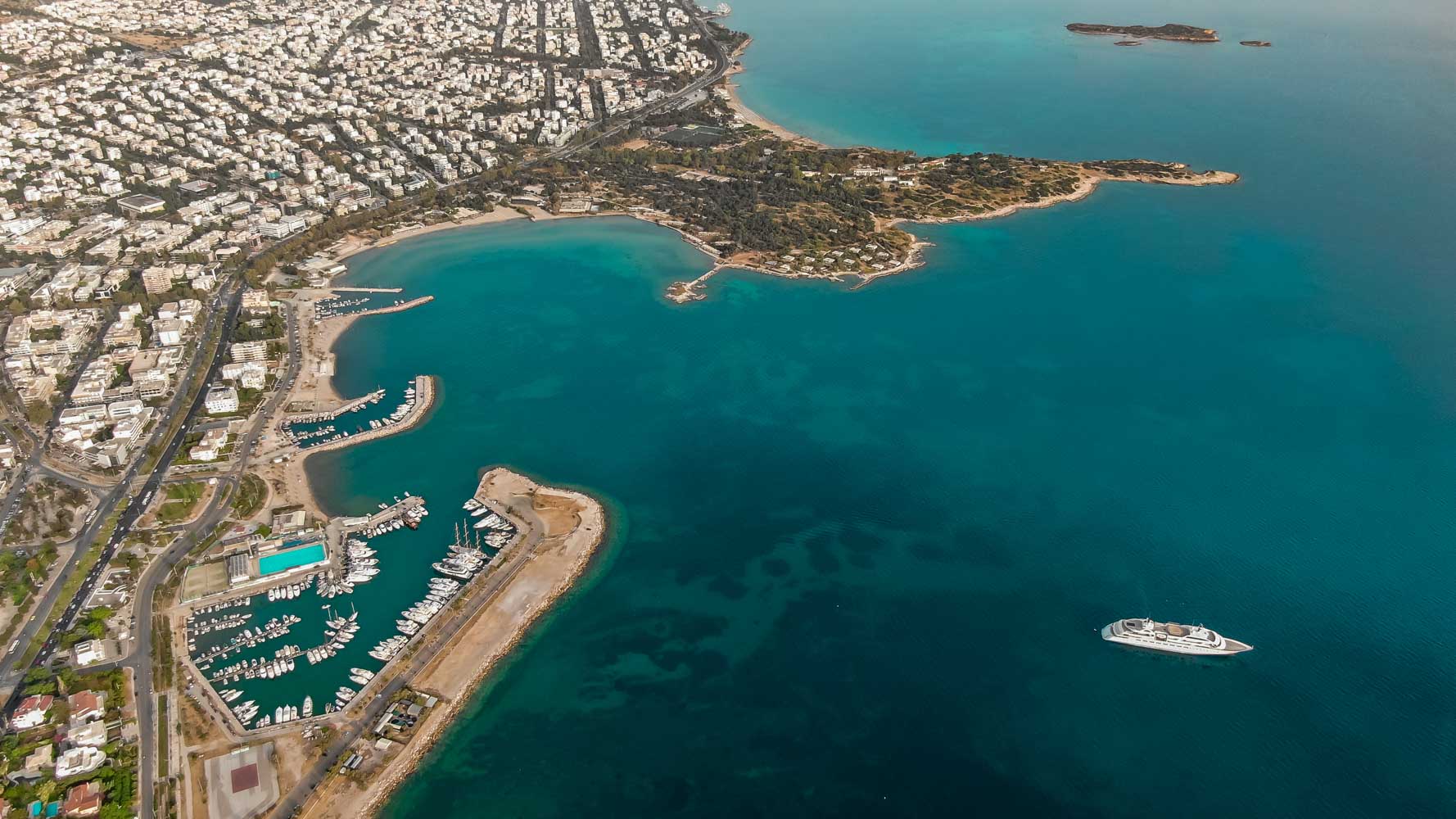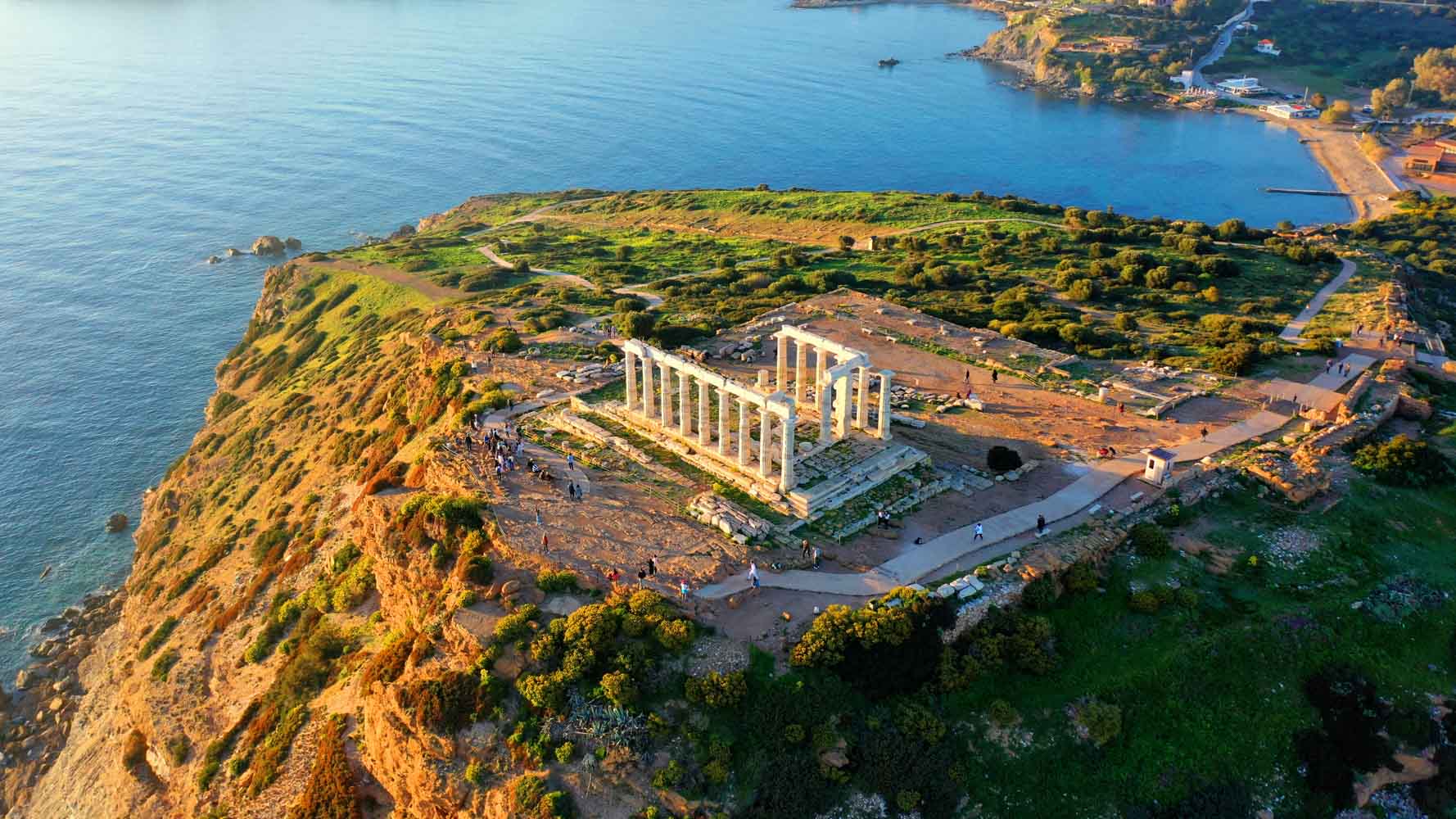
Visiting the Temple of Poseidon at Sounion
Of the many things to do in the Athenian Riviera, a visit to the Temple of Sounion ranks high. This magnificent destination unites cultural significance and a world-class location. It’s also safe to say that the sunset at the Temple of Poseidon at Sounion is a world class experience, unforgettable. This makes an excellent excursion from Athens, and combined with perhaps a swim and a seaside meal, a wonderful excursion.
The History of the Temple of Poseidon at Sounion
It looks so peaceful here with the Aegean stretching out below you. But in fact, the winds that can funnel down the strait between Evia and Andros (the strait of Chalcis) can make this a very dangerous spot. Ships in the ancient world only considered themselves safely home once they had passed this famous cape. It was, in other words, the perfect place to build a temple to the god of the sea and ask for his benevolent intervention.
The temple of Poseidon that we admire today was built during the Golden Age of Athens, in the middle of the 5th century BC, very close to the time that the Parthenon was built. However, it’s not the first one. The original temple of Poseidon dated centuries earlier, to around 700 BC. This earlier temple is thought to have been destroyed by the Persians.
The Placement of the Temple
With the rise of power of the Athenian Naval forces, it made perfect sense to have a temple to Poseidon placed not only in this dangerous spot but also in a spot of prominence, where it could be seen by all ships departing and returning.
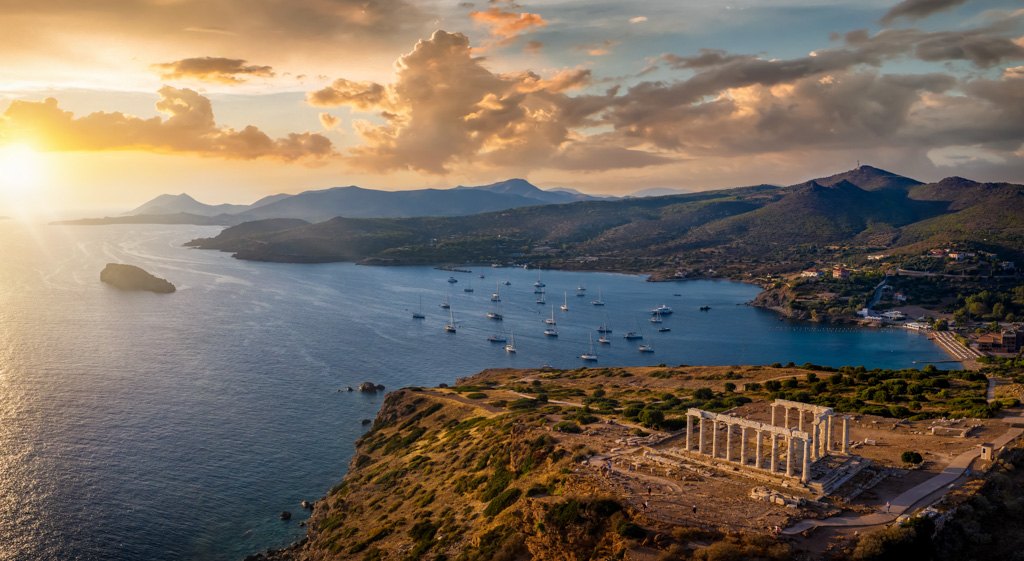
But that was not the only reason. This is also a strategic vantage point, from which one can survey all of this heavily trafficked stretch of sea, observing both commercial activities but also more importantly to have a lookout for potential attacks by sea. To reach Athens from the coast of Attica, everyone needed to pass this cape.
The Ancient Mythology of Cape Sounion
Lovers of Greek Mythology know this place well, for it is from this very spot that the Aegean Sea is said to have got its name. The story actually begins in Crete, with the Minotaur. After too many tributes of young men and women from Athens being sacrificed to the Minotaur of Knossos in Crete, Thisseus, son of King Aegus, had finally had enough. He placed himself among young men to be sacrificed, slayed the Minotaur, and made his way out of the famous labyrinth with the help of Ariadne, the daughter of King Minos. Upon his visorious return though, he had forgotten to change the black sails of his ship to white ones- the agreed upon signal that the voyage was a success and that he was still alive. King Aegus, anxiously awaiting his son’s return from this very spot, saw the black sails, and in his despair he jumped to the sea below, giving it his name.
The Temple Today
The Temple that we see today is formidable – once with columns numbering 13 on the long sides and 6 at each end, with dimensions of 13 and half meters by just over 31 meters. At the center of the temple was the Naos- the hall of worship, entirely enclosed. Nothing of this remains, but it would have much resembled the one at the Temple of Hephaestus (the Thisseon) in the Ancient Agora of Athens, and it is thought that the temple was built by the same architect. In the Naos there was an enormous cult statue of Poseidon in bronze.
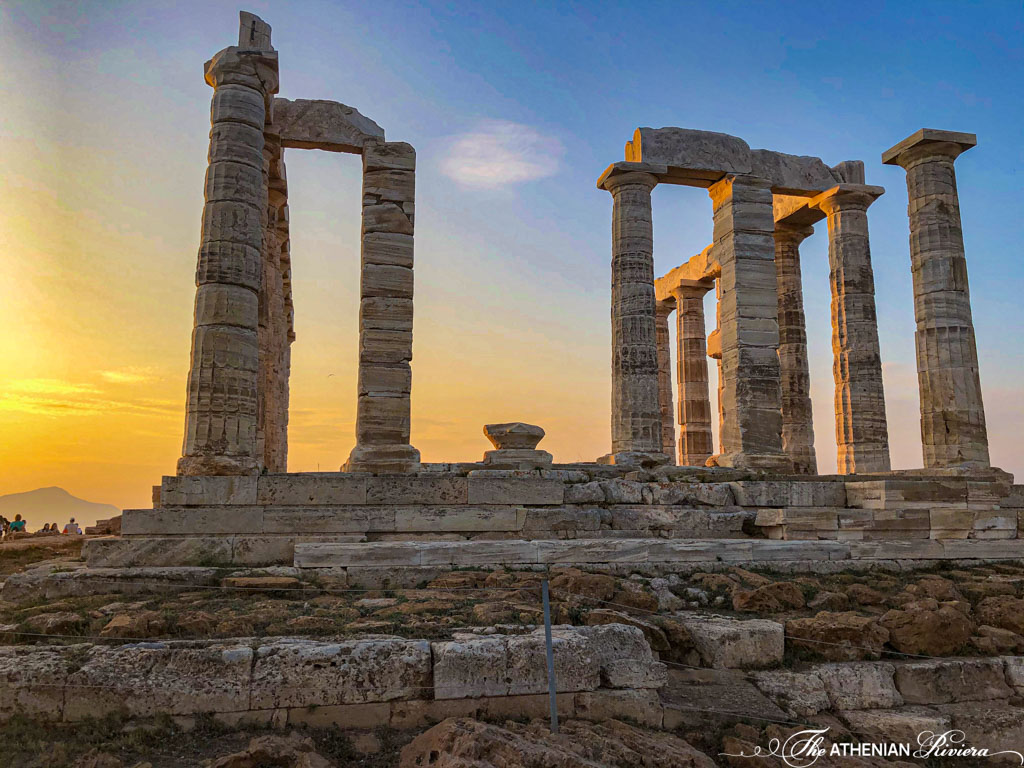
Many of the columns too are no longer here. Some have been lost to time – it is thought that either an earthquake or extremely high winds contributed to the temple’s partial destruction. Others have been looted like so many other of Greece’s antiquities. Some column drums are in the garden of Chatsworth in England. However, enough of the original structure is intact to give one a full sense of its scale and grandeur.
Like the Parthenon, the columns of the Temple of Poseidon are in the Doric order, prized for its severe, austere beauty. The temple itself is constructed of marble from the nearby Agrileza quarries, but the frieze that once was here is of Parian marble. The frieze depicts the labors of Thisseus, the battle of the Centaurs, and other themes as well. It can be seen at the Archaeological Museum of Lavrion. The museum itself is just a further 15 minute drive along the same main road, in the seaside town of Lavrion, up the eastern coast of the cape. If you plan to visit the museum as well, do note that its hours are much earlier – it closes at 15:30 daily, and is closed on Tuesdays.
The Fame of the Temple of Poseidon at Sounion
One of the most interesting sights at the Temple of Poseidon comes from a much later era. This was one of the supreme destinations on a grand tour of Europe during the 18th and 19th centuries. Many visitors actually inscribed their names and even the dates of their visits on the temple itself, etching them right into the Marble. Although it is unthinkable by today’s standards, it was not thought wrong in that era. In fact, among those inscriptions is even that of the most famous of Philhellenes, Lord Byron. Ask a guard to point it out for you when you visit.
Join our dedicated ATHENIAN RIVIERA TRAVEL PLANNING Group on Facebook – where you can ask questions about your upcoming trip to the Athenian Riviera and find inspiration about traveling to the southern part of Athens. Please join us to prepare yourself for you trip in the near future.
The Sunset from the Temple of Poseidon
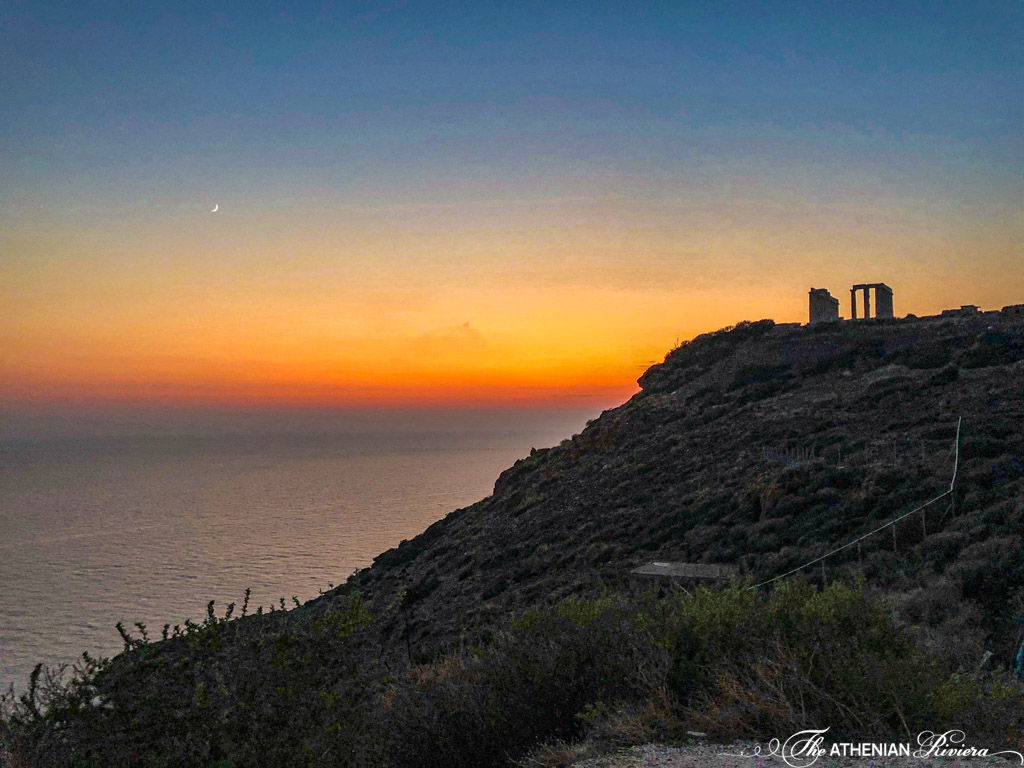
sunset at the Temple of Poseidon
These formidable columns bathed in golden light are a sight you will never forget. And the view of the Aegean stretching below the cape is nothing short of magical. All visitors gather at the site at that moment, and it is long the custom that they applaud, spontaneously. It is a very nice moment to share with strangers, uniting in appreciation of natural splendor in this culturally and spiritually significant site.
Where is the Temple of Poseidon?
From Voula or from Vouliagmeni, two of the absolute jewels of the Athenian Riviera, the Temple of Poseidon is a little less than an hour’s drive. This is a beautiful trip by car and it’s well worth renting one so you can enjoy the stunning views at your leisure, as the road hugs the curves of the riviera. However, there are many organized trips to visit with great convenience. There are also private tours available for maximum comfort and flexibility.
What to See and Do Near the Temple of Poseidon at Sounion
There are two beaches of note on the way to the Temple of Poseidon, easily accessed by car – romantic sandy Kape Beach (10 minutes before you reach Cape Sounion), and the white sandy Paralia Legrenon (just 7 minutes). There is also Sounio Beach itself, reachable on foot. The quality of the water along this stretch of the Athenian Riviera is magnificent.
For dining there are also plenty of attractive choices for a classic seaside taverna/ouzerie experience. Sounio Restaurant Stamatis is right off of the main road and just by the Paralia Legrenon. Here you’ll find all the classic seafood specialties. Taverna Syrtaki is just past the Temple turn off, also on the main road, beside Kavatsi beach. It also serves a classic menu. Of course, the many fine dining possibilities of the Athenian Riviera are within a very short distance as well.
Visiting the Temple of Poseidon at Sounion
The Temple of Poseidon is open daily, all year round, from 9:30 am until sunset. The last admission is 20 minutes before sunset. The Temple is closed on major public holidays, and also has free admission days several times throughout the year. Please visit the website of the Ministry of Culture for complete details on both.


